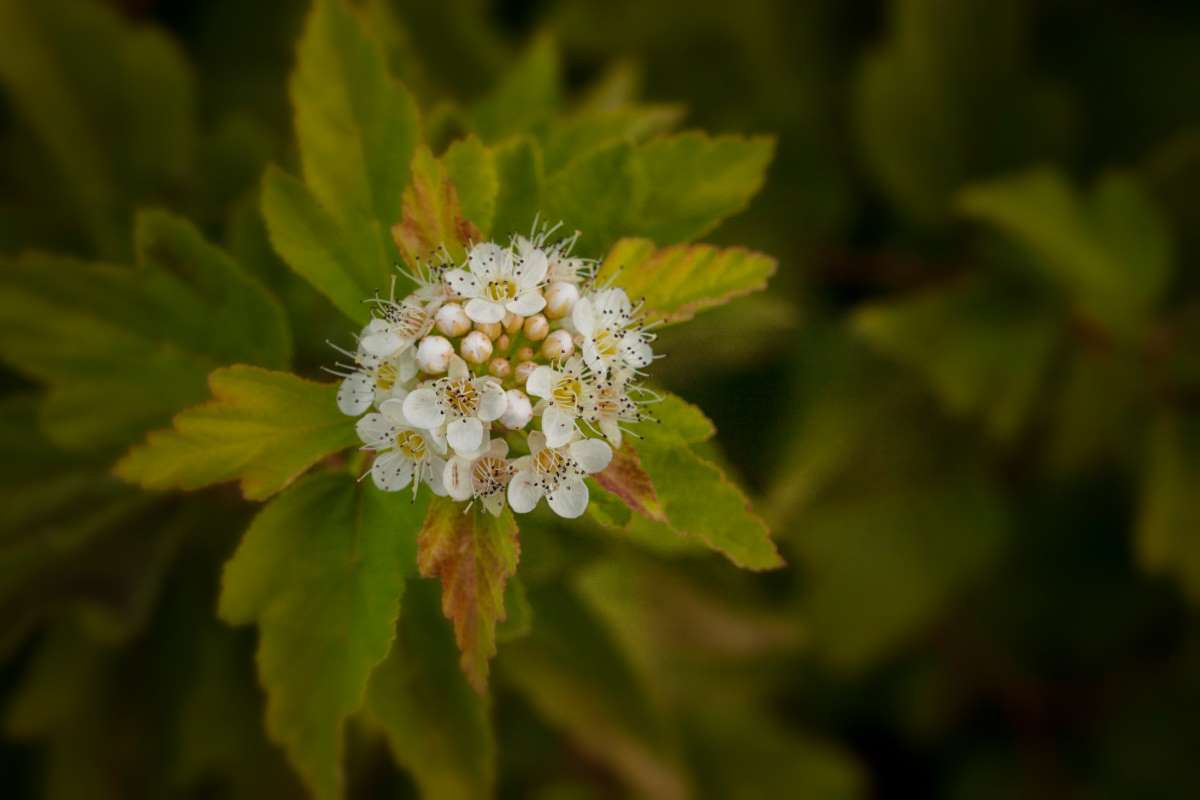Description
Physocarpus – Ninebark –
There are 10-12 deciduous shrubs in the Rosaceae family, in this genus. They occur in thickets and on rocky slopes, with most from North America and one from Eastern Asia They have flaking bark and alternate, ovate to rounded or kidney shaped, prominently veined with serrated edges, palmately lobed, mid or dark green leaves which turn yellow in fall. They are grown for their foliage and dense, terminal corymbs of small, cup shaped, 5 petaled, with numerous stamens white or pink flowers, borne in early summer. Grow in a shrub border.
Grow in preferably acidic, fertile, moist but well drained soil in full sun or partial shade. May become chlorotic if grown in alkaline soil.
Prone to leaf spots, fireblight, powdery mildew, and witches broom.
P. monogynus – Mountain Ninebark – This upright, compact shrub found from Wyoming and South Dakota to New Mexico and Texas grows 2-4′ feet tall and wide. It produces rounded to ovate, 3 to 5 lobed, doubly toothed, mid green leaves, 2″ wide. From late spring to summer it bears few rosy white flowers, 1/4″ across, in corymbs, 2″ across, followed by clusters of bladder like, green flushed red fruit, 1/4″ long.
Zones 5-8





